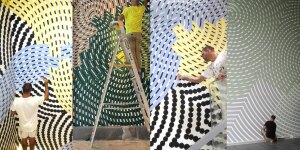“Art should always make us laugh and frighten us a little, but never bore us.”
A manifestation of Jean Dubuffet’s inimitable manipulation of the painted surface, Le Cérémonieux is a striking portrait from a landmark decade in the artist’s career. Executed in a summer-long period of intense experimentation with enamel-based paints, Le Cérémonieux celebrates Dubuffet’s rebellious Art Brut philosophy through both style and materiality. The discordant mixture of enamel and oil created a turbulent surface—a form of abstraction at a chemical level and an apt trajectory within the same decade as the artist’s introduction of sand, gravel and debris to his painted surfaces. With his quintessentially naïf and often gesturally raw figuration, Dubuffet derived inspiration from primitive and outsider art, charting new stylistic territory in figurative abstraction in the wake of the Second World War. Through deconstructing the figure, the painted surface and the conventional reflection of the material world, Dubuffet arrived at a new unique visual lexicon.
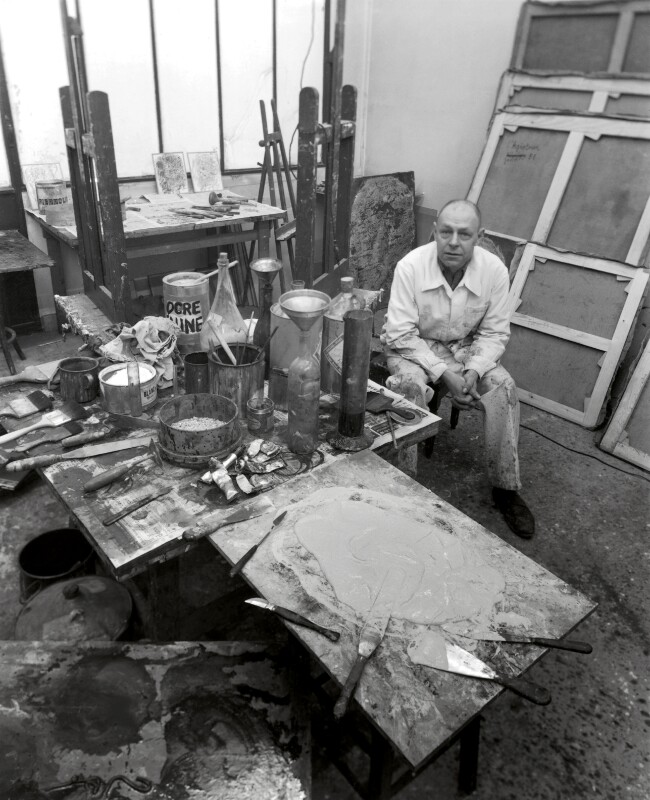
From a series of abstracted portraits created in 1954, Le Cérémonieux presents an imposing, pale silhouette against a dark ground tinged with traces of deep red. Flattened against the picture plane, the figure’s startlingly playful, crude and simultaneously absurdist grin is contrasted by the drips and stains of rust-colored paint commingled within its phantasmic form. Within the scope of Dubuffet's celebrated oeuvre, the 1950s represent the artist’s exploration of the material, as exemplified by the present work. Contemporaneous with his experimentation with sand, tar, detritus, and other non-traditional media, the present work epitomizes the artist’s obsession with texture and his innovations in manipulating the painted surface with varied media. Begun in July of 1954, Dubuffet combined enamel and oil paint: two incompatible mediums, the former which would dry rapidly, allowing little room for artistic intervention beyond the day the painting was made. The inharmonious mixture of oil and enamel created surfaces which would inherently mottle and craze. The artist described his fascination with the process in his notes: “I combined these enamel paints with ordinary oil paint and, as they displayed a lively incompatibility, the result was a whole set of digitate spots and convolutions…The result, a whole succession of marbling (small internal branching and intricately embellished surfaces) which succeeds in transporting the subject of the painting…to a world ruled by entirely different reasons, making them appear in an unaccustomed light. In this way, by the revelation of our familiar objects suddenly transformed and strange, is evoked, even quite startlingly sometimes (at least for me), these strange bewildering worlds that exercise a kind of fascination” (Jean Dubuffet in Exh. Cat., New York, The Museum of Modern Art (and traveling), The Work of Jean Dubuffet, 1962, pp. 92-96).
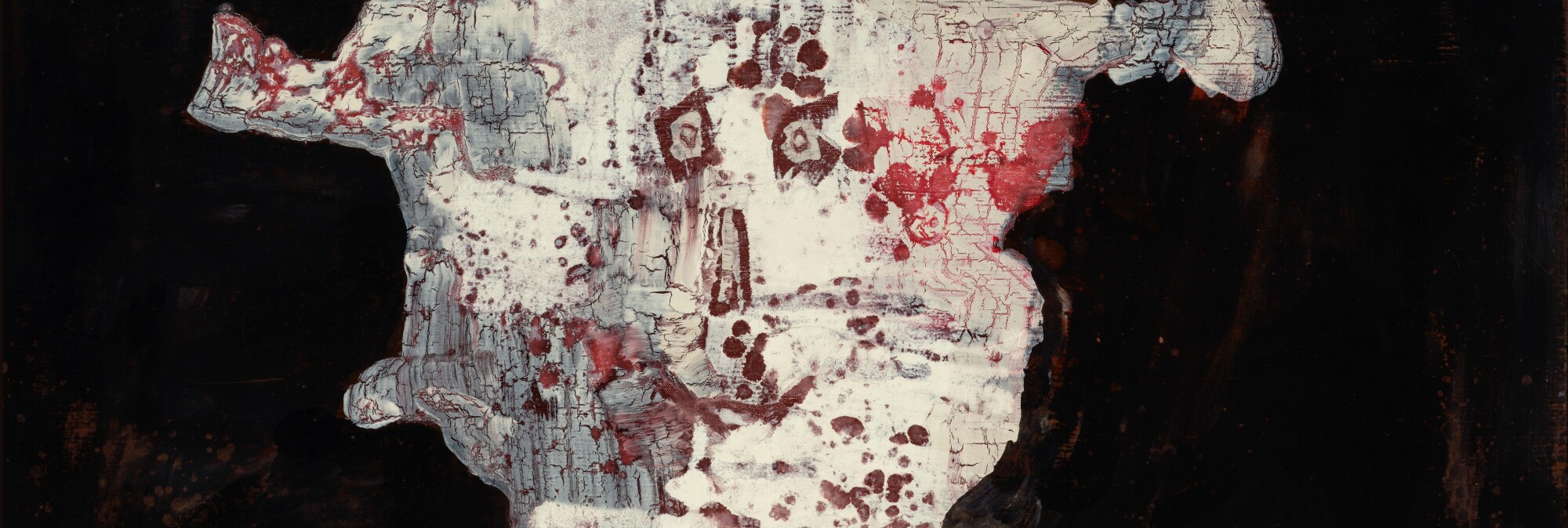
With his artistic alchemy, Dubuffet facilitated a new automatism of materiality. Through the combination of these opposite materials, Dubuffet, rather than merely painting a subject, would "transport" it onto the canvas. Using a fine brush, he would then complete these paintings with care, emphasizing the minute details provoked by the opposing nature of the paints. The repellent comingling of the burgundy dispersions within the figure’s white form connotes corrosion, decay, dematerialization and the categorical erosion of the human figure visualized in the wake of the Second World War. In Le Cérémonieux, the figure smiles as its material surface appears to degrade, reflecting its inherent properties of corporeality and conjuring the visceral depictions by artists like Chaïm Soutine (see fig. 1).
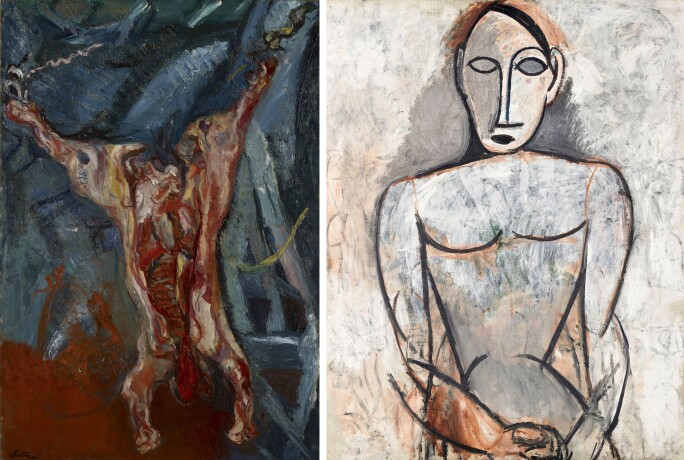
RIGHT: Fig. 2 Pablo Picasso, Femme aux mains jointes (étude pour Les Demoiselles d'Avignon), 1907, Musée Picasso, Paris. Image © 2024 Photo Josse / © Succession Picasso/DACS, London 2024 / Bridgeman Images. Art © 2024 Estate of Pablo Picasso / Artists Rights Society (ARS), New York
During and following the Second World War, like many other European artists confronted with its horrors, Dubuffet was left with the need to rid visual art of its heroic aims and inhibitions in reflecting collective societal conditions. Alongside other artists active in Paris in this decade, particularly Wols and Fautrier, Dubuffet embraced an intuitive style that championed spontaneity, not unlike the automatic tenets of Surrealism, and rejected formal Western ideals of beauty and skill. Influenced by Hans Brinzhorn’s book Artistry of the Mentally Ill, Dubuffet coined the term Art Brut, meaning “raw art” or “outsider art”, as his classification for a mode of art produced by non-professionals working outside the aesthetic norm. Not unlike Picasso’s derivation of inspiration from African Art at the turn of the century (see fig. 2), Dubuffet was especially drawn to so-called “primitive” art, as well as that produced by children, derelicts and sufferers of mental illness. The artist believed that these modes of visual expression were closer to the truth of the subliminal unconscious, resulting in a more realistic artistic language devoid of unnecessary aesthetic ornamentation. With a naïvely rendered figure, Le Cérémonieux reflects the tenets of Art Brut and Dubuffet’s own painterly mastery through his inspired view of the world around him.
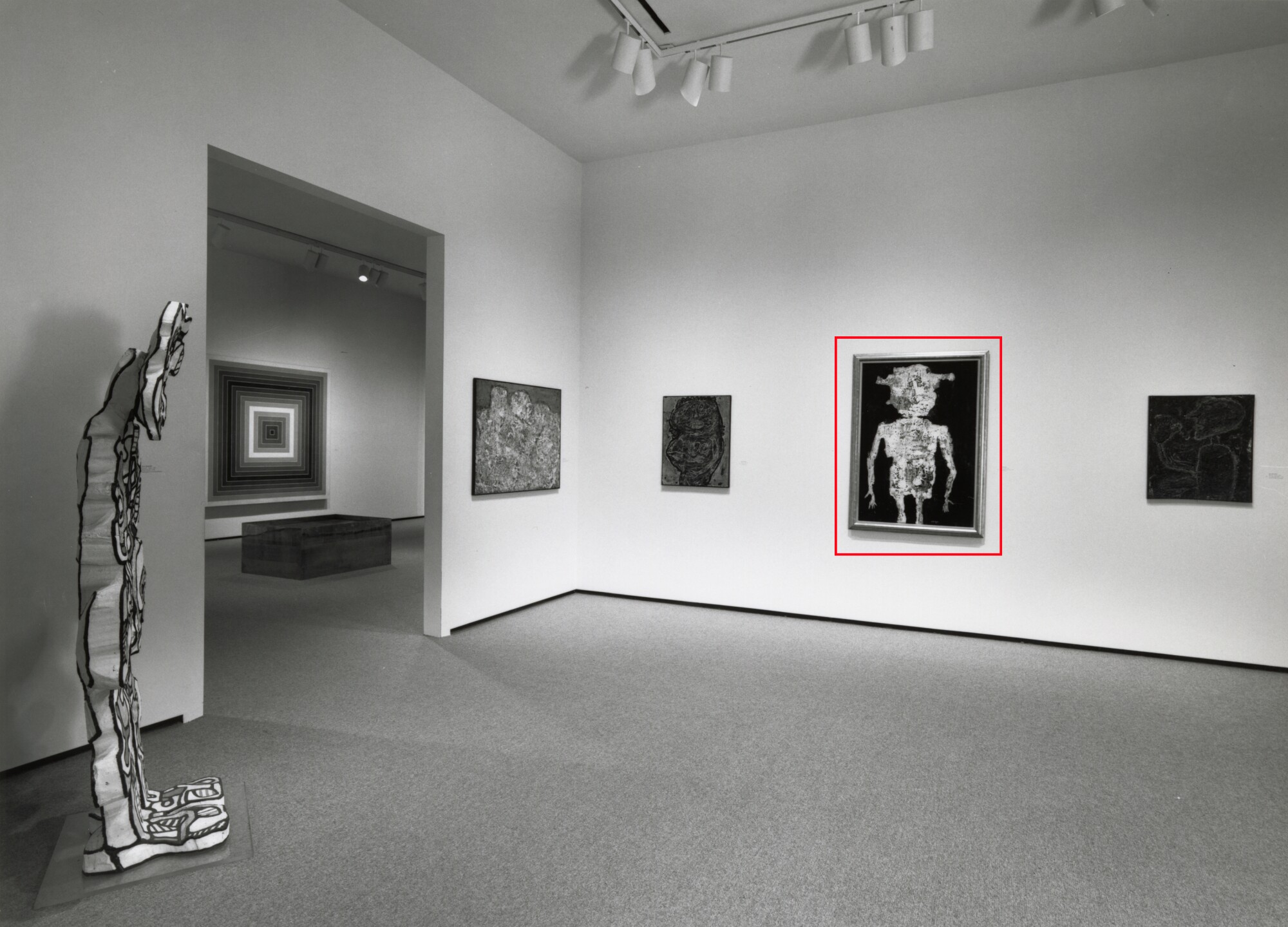
Painted during the same year as Dubuffet’s notable Vaches paintings, Le Cérémonieux was included among examples from the series, as well as other important portraits from the period, in several important exhibitions throughout the latter half of the twentieth century, including the artist’s 1960-61 retrospective at Musée des Arts Décoratifs, Palais du Louvre. Le Cérémonieux has only been in two collections since its creation: before Sydell Miller acquired Le Cérémonieux in 1998, the painting was previously owned by another midwestern cosmetics entrepreneur, Morton G. Neumann, who acquired the work directly from Pierre Matisse in 1959. Among other celebrated twentieth century works from Neumann’s collection, the present painting was displayed at two major institutions, the Art Institute of Chicago and the National Gallery of Art, Washington, D.C. in the 60s and 80s (see fig. 3). Exemplary of Dubuffet’s revolutionary Art Brut style and his continuous dedication to pushing his own creative material boundaries, Le Cérémonieux reflects Dubuffet at the height of his artistic originality.


